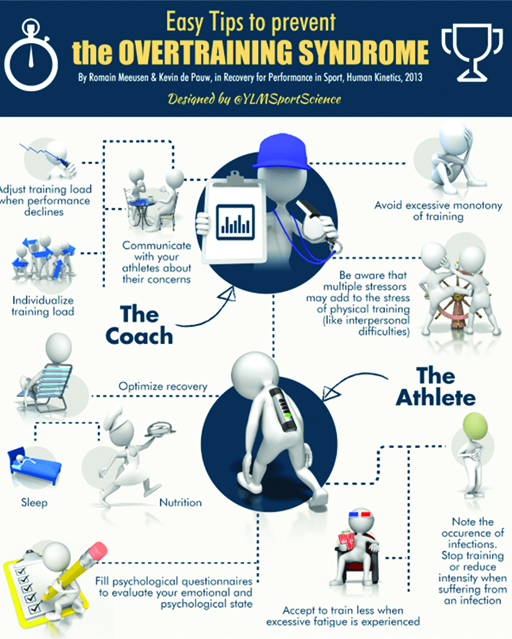2 Preventing overtraining
In Session 4, you saw that athletes need to train at least five times a week for a medical practitioner to diagnose overtraining via the diagnostic flowchart. An athlete training five times a week represents a committed full-time athlete or recreational exerciser.
Activity 2 A simple stategy for preventing burnout
Watch the video at the link below of Harvard University women’s ice hockey coach Katey Stone (also the US women’s national team coach) in which she describes a simple strategy for preventing burnout amongst committed full-time athletes or exercisers. Notice how seriously university (college) sport is taken in the USA compared to in Europe. Identify three main reasons she gives for her strategy.
You should watch the whole video here [Tip: hold Ctrl and click a link to open it in a new tab. (Hide tip)] .
Discussion
Stone’s determination to allow two full rest and recovery days for her athletes is largely explained as a way for them to get away from sport to be a ‘college kid’. From a social perspective of burnout, time off also allows the athletes to build their identity beyond sport which, as you have seen, is also an important preventative strategy. She also explains that she wants to prevent mental fatigue during a long season in which peak performance is needed in March. She reports that injury rates were considerably reduced after this strategy was introduced. You might term her approach a determined ‘time-off’ strategy.
If time off is combined with physiological monitoring then burnout risk is considerably reduced. Sam Quek (hockey) (Session 4) and Bo Hanson (rowing) (Session 5) both spoke about monitoring their heart rate daily. Research has concluded that short-term (<2 week) overload training results in an increased resting heart rate with a mean increase of +4–5 beats per minute (Bosquet et al., 2008). An elevated resting heart rate is an early indicator of possible overtraining.
You also studied a more holistic approach to monitoring through the use of an EIS app in which a whole range of factors were entered each day that the support staff used to prevent injury and overtraining (e.g. Sam Quek, Session 4).
Activity 3 Preventing overtraining and underrecovery
Research into overtraining and underrecovery is continually evolving. Examine this visual summary of tips to prevent overtraining derived from Meeusen and De Pauw (2013).
Looking at both the coach section and the athlete section, are there any aspects that surprise you?
Discussion
In the coach section, you may have found the suggestion that training monotony is a recognised contributory factor unusual. It would perhaps seem obvious to any experienced coach but it probably needs to be highlighted: athlete engagement with their training is important for their welfare.
In the athlete section, none of the suggestions were particularly unexpected apart from perhaps the recognition that psychological questionnaires have a recognised role. This supports the points Sam Quek (hockey) made about monitoring and responding honestly to such welfare monitoring questions.
It will be fascinating to see how the monitoring of overtraining and underrecovery develops as wearable devices become more advanced in measuring human physiology.
The preventative strategy you will look at next is about coaching behaviours.

